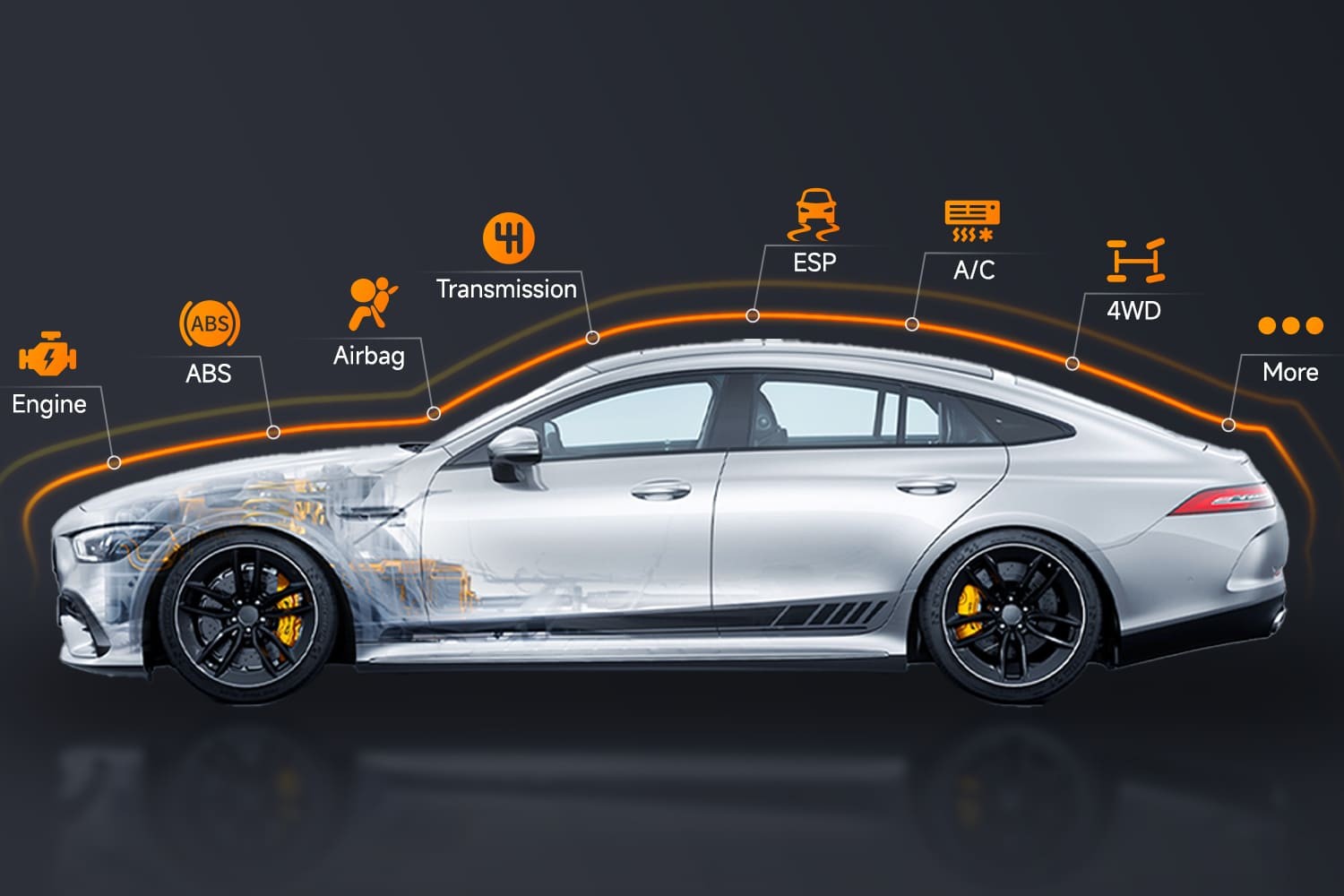Maintaining your vehicle’s health is crucial, much like keeping up with your own well-being. Regular checks and addressing minor concerns early can prevent significant issues down the road.
One vital aspect of your car’s performance is fuel pump pressure. If you’re wondering whether your OBD2 scanner can provide insights into this critical measurement, you’re in the right place. Let’s delve into the capabilities of OBD2 scanners and whether they can read fuel pump pressure.
Understanding the tools for car diagnostics is key to effective vehicle maintenance. When it comes to fuel pump pressure, standard OBD2 scanners typically do not offer this specific reading. While they excel at reading diagnostic trouble codes (DTCs) and helping identify the reasons behind a lit check engine light, fuel pump pressure monitoring often requires more specialized equipment.
Fuel pump pressure is a critical indicator of your car’s fuel delivery system efficiency. Insufficient pressure can starve your engine of fuel, leading to decreased performance or even engine stalling. Conversely, excessive pressure can cause issues like rough idling and engine misfires. Monitoring fuel pump pressure is akin to checking blood pressure in humans; deviations can signal underlying health issues. Regular monitoring can preemptively identify potential problems, saving you from costly repairs later on.
Understanding the Scope and Limitations of OBD2 Scanners
OBD2 scanners are invaluable tools for modern car maintenance. These user-friendly devices empower car owners and mechanics to read and clear trouble codes, monitor various engine parameters, and perform emissions checks. Think of them as a portable diagnostics lab for your vehicle!
However, despite their broad utility, OBD2 scanners have limitations. Basic models, in particular, are not designed to display all possible vehicle data. Fuel pump pressure is often one of the parameters that falls outside their scope.
What OBD2 Scanners Can Do
Most OBD2 scanners are designed to perform a set of core diagnostic tasks efficiently:
- Reading and Clearing Diagnostic Trouble Codes (DTCs): These codes pinpoint problems that trigger the check engine light. From oxygen sensor malfunctions to engine misfires, OBD2 scanners help decipher what’s ailing your car.
- Real-time Data Monitoring: Scanners provide live data streams showing engine RPM, coolant temperature, and fuel system status. This real-time insight is crucial for understanding your vehicle’s performance dynamics.
- Emissions Readiness Checks: OBD2 scanners can verify if your car is ready for emissions testing, ensuring compliance with environmental regulations and helping you pass inspections.
OBD2 scanners are essential for routine car maintenance and troubleshooting common issues. However, their capabilities are constrained when it comes to more detailed parameters like fuel pump pressure.
Why Basic OBD2 Scanners Don’t Read Fuel Pressure
The limitation in reading fuel pump pressure comes down to the communication protocols vehicles use. Standard OBD2 systems are primarily focused on emissions-related components and systems that can trigger the check engine light. Not all sensors in a vehicle are mandated to communicate through this OBD2 protocol. Fuel pump pressure is often one of those parameters that is not universally accessible via standard OBD2.
Imagine OBD2 as a public communication channel broadcasting essential, broadly relevant information for most vehicles. To capture more specific, detailed data like fuel pump pressure, you often need more specialized tools or access to different communication channels within the vehicle’s network.
Standard OBD2 scanners are designed for general diagnostics and do not typically include the functionality to monitor fuel pump pressure because it’s not part of the standard OBD2 protocols in many vehicles. For this level of detail, more advanced diagnostic equipment is required.
Alternative Methods for Monitoring Fuel Pump Pressure
If your standard OBD2 scanner can’t read fuel pump pressure, there are alternative, reliable methods to obtain this crucial information.
One straightforward approach is using a manual fuel pressure gauge. This tool directly connects to your vehicle’s fuel rail or fuel line, allowing you to measure the pressure mechanically. It’s similar to using a tire pressure gauge – simple, direct, and effective. By consulting your car’s service manual for the correct connection points, you can get an accurate reading as soon as the gauge is attached.
Another option is to invest in an advanced OBD2 scanner or professional-grade diagnostic tool capable of accessing a wider range of vehicle data, including fuel pressure. Tools like the Foxwell NT650 Elite or Foxwell GT60 are examples of scanners that offer enhanced capabilities, often including fuel pressure readings.
While these advanced scanners are more expensive than basic models, they provide significantly deeper insights into your vehicle’s operation by accessing live ECU data. This makes them valuable tools for anyone serious about comprehensive vehicle maintenance.
For those who prefer a hands-on approach, complete diagnostic kits that include fuel pressure gauges and other essential tools can be ideal for accurate fuel pump pressure monitoring and overall engine performance maintenance. These kits often come with adapters for various vehicle models and detailed instructions, making them accessible even for less experienced users. This approach ensures accurate fuel pump pressure readings, helping maintain optimal engine health and performance.
Conclusion
So, will an OBD2 scanner read fuel pump pressure? The answer is nuanced. Basic OBD2 scanners typically do not have the capability to read fuel pump pressure. However, advanced OBD2 scanners and dedicated fuel pressure gauges offer reliable ways to monitor this critical parameter.
Keeping an eye on fuel pump pressure is essential for maintaining your vehicle’s performance and preventing potential problems. Whether you choose a manual gauge, an advanced scanner like Foxwell, or a comprehensive diagnostic kit, having the right tools is key to efficient and effective car care. Being proactive about your car’s maintenance can save you significant time and money in the long run.
FAQ
Can you read fuel pressure with a scanner?
Yes, but only with advanced OBD2 scanners capable of accessing enhanced live data streams, such as the Foxwell NT650 Elite or GT60. Basic OBD2 scanners generally lack this function.
Will a fuel pump show up on a code reader?
Not directly for pressure issues. A standard code reader might detect fuel system-related problems, like lean or rich fuel conditions, but it won’t specifically pinpoint fuel pump pressure issues.
How to test your fuel pump pressure?
You can test fuel pump pressure using a manual fuel pressure gauge connected to your fuel system or by utilizing an advanced diagnostic tool that can read this data from your vehicle’s ECU.

